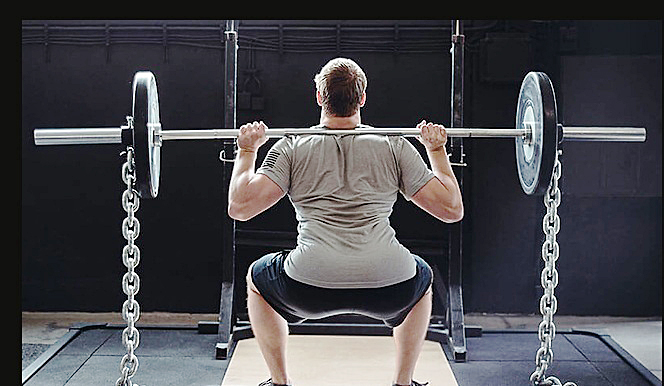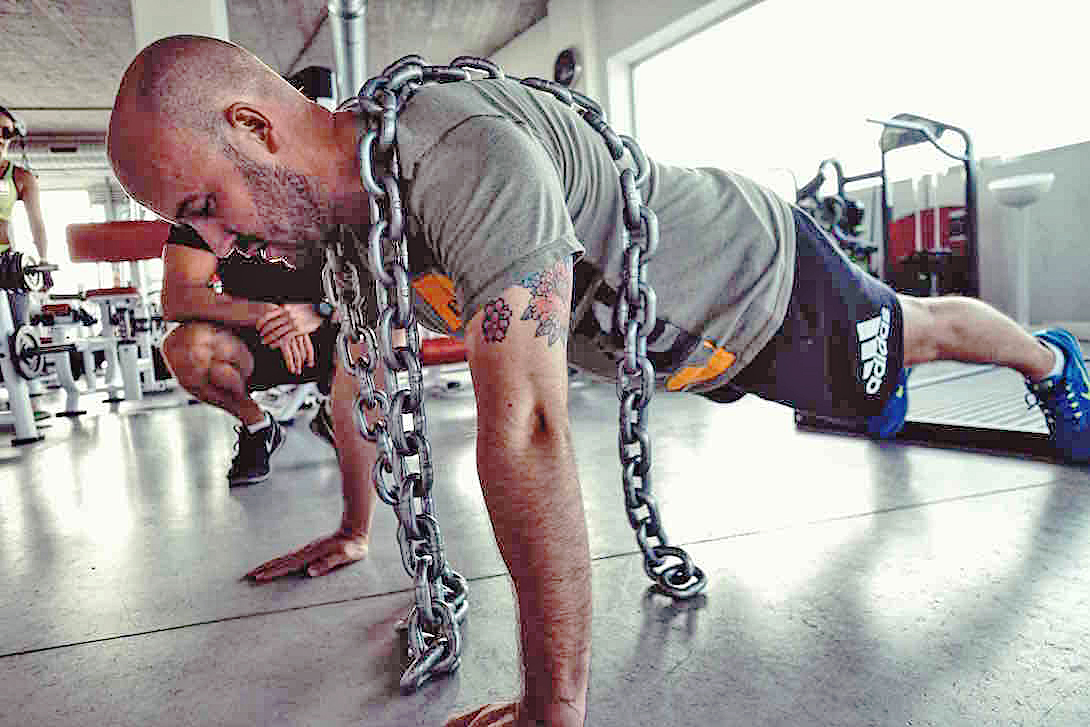Know how use of chains helps greatly in the development of explosive power, improved stability, motor control, and neurological adaptation
In recent years, the use of unconventional objects for strength training has become immensely popular across the globe. One of such methods which have gained recognition from elite athletes is the use of chains for training. These are called chain-resisted training exercises in which the chains are added to the end of conventional barbells. Trainers and experts across the globe have claimed that this type of training boosts strength and power more than what is achieved by using traditional free weights. In addition, chain-loaded resistance training is also believed to reduce joint stress resistance training during exercises such as bench press, squatting, and deadlifting.
It is also believed that the use of chains helps greatly in the development of explosive power, improved stability, motor control, and neurological adaptation. It may be noted that chains can be used in any type of training that involves a barbell. However, elite athletes mainly use it for core strength movements. Enhanced strength with chain-loaded resistance leads to an improved amount of force development because loads are lighter near the bottom of the bench press. Greater coordination of agonist and synergist muscle groups are also achieved.
What is chain-resisted training?
It is classified as a type of variable resistance training. This form of training includes chain-resistance training and elastic-resistance training. A variation is caused in the load being lifted while performing an exercise supplemented with chains or elastic bands throughout the range of movement. Thus, it is called ‘variable resistance training’. The term ‘accommodating resistance’ is also commonly used when discussing chain-resistance training. According to sports scientist and former Head of Academy Sports Science for Cardiff City Football Club, Owen Walker, accommodating resistance allows for the resistance to increase in the biomechanical advantageous positions as the muscle is capable of exerting a greater force. “In other words, the weight of the chains ‘accommodates’ (i.e. gets heavier or lighter) alongside the athlete’s ability to produce force – when they are in either a stronger position or a weaker one. As the athlete moves up toward the end position of an exercise, they are also typically moving up the ascending strength curve. As they move up, the weight gets heavier, and vice-versa. For example, using chains during the bench press or squat provides an increasing load during the concentric phase of the lift to ‘accommodate’ the ascending strength curve. This means that as they move into more biomechanically advantageous positions (i.e. stronger positions), they are also required to produce more force,” writes Walker in his journal.
What’s the quantity of weight added by the chains?
A common concern often faced by sports science experts are while selecting and using chains. There is uncertainty as to how much additional load the chains provide during an exercise – scientifically known as the mass-displacement relationship. “This relationship purely describes how much mass (i.e. load) is provided when the chains are lifted to a particular height off the ground. Luckily, one study attempted to measure this and provided some degree of clarity to this issue. “If the desired accommodated weight is added to the back squat is to represent ≥20% of the athlete’s 1RM, then this weight should correspond with the chain which provides this load at the end position of the athlete’s lift. For example, if the athlete’s end height of the back squat is 150cm, then the appropriate chain which provides ≥20% of 1RM in this position should be selected,” writes Walker.





